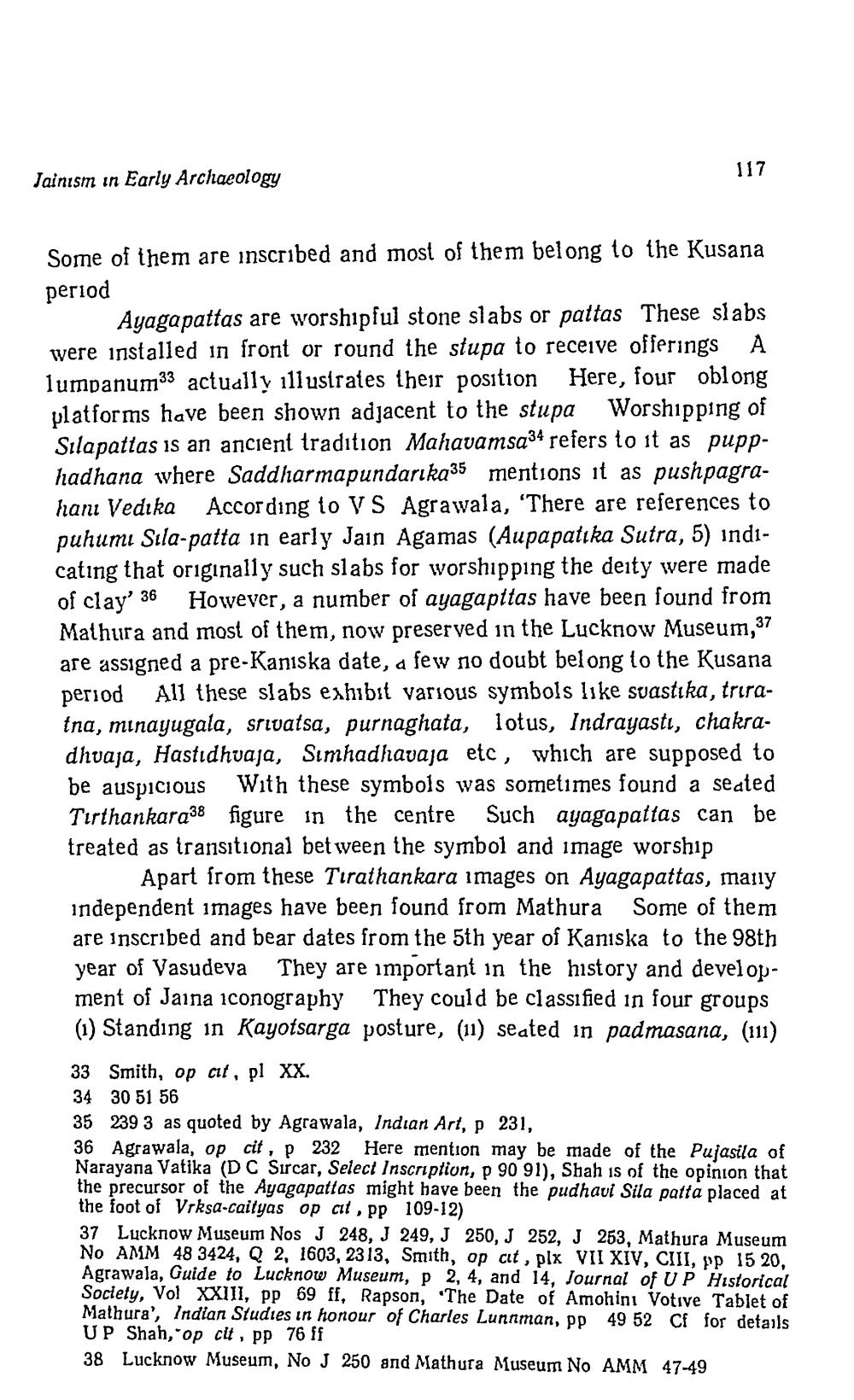________________
Jainism in Early Archaeology
117
Some of them are inscribed and most of them belong to the Kusana
period
A
Ayagapattas are worshipful stone slabs or pattas These slabs were installed in front or round the stupa to receive offerings lumpanum33 actually illustrates their position Here, four oblong platforms have been shown adjacent to the stupa Worshipping of Silapattas is an ancient tradition Mahavamsa34 refers to it as pupphadhana where Saddharmapundarika35 mentions it as pushpagrahani Vedika According to VS Agrawala, 'There are references to puhumı Sıla-patta in early Jain Agamas (Aupapatika Sutra, 5) indicating that originally such slabs for worshipping the deity were made of clay' 36 However, a number of ayagapttas have been found from Mathura and most of them, now preserved in the Lucknow Museum,37 are assigned a pre-Kaniska date, a few no doubt belong to the Kusana period All these slabs exhibit various symbols like svastika, triratna, minayugala, srivatsa, purnaghata, lotus, Indrayastı, chakradhvaja, Hastidhvaja, Simhadhavaja etc, which are supposed to be auspicious With these symbols was sometimes found a seated Tirthankara38 figure in the centre Such ayagapattas can be treated as transitional between the symbol and image worship
Apart from these Tirathankara images on Ayagapattas, many independent images have been found from Mathura Some of them are inscribed and bear dates from the 5th year of Kaniska to the 98th year of Vasudeva They are important in the history and development of Jaina iconography They could be classified in four groups (1) Standing in Kayotsarga posture, (11) seated in padmasana, (111)
33 Smith, op cit, pl XX.
34 30 51 56
35 239 3 as quoted by Agrawala, Indian Art, p 231,
36 Agrawala, op cit, p 232 Here mention may be made of the Pujasila of Narayana Vatika (DC Sircar, Select Inscription, p 90 91), Shah is of the opinion that the precursor of the Ayagapattas might have been the pudhavi Sila patta placed at the foot of Vrksa-caityas op cit, pp 109-12)
37 Lucknow Museum Nos J 248, J 249, J 250, J 252, J 253, Mathura Museum No AMM 48 3424, Q 2, 1603, 2313, Smith, op at, plx VII XIV, CIII, pp 15 20, Agrawala, Guide to Lucknow Museum, p 2, 4, and 14, Journal of UP Historical Society, Vol XXIII, pp 69 ff, Rapson, The Date of Amohini Votive Tablet of Mathura', Indian Studies in honour of Charles Lunnman, pp 49 52 Cf for details UP Shah, op cit, pp 76 if
38 Lucknow Museum, No J 250 and Mathura Museum No AMM 47-49




